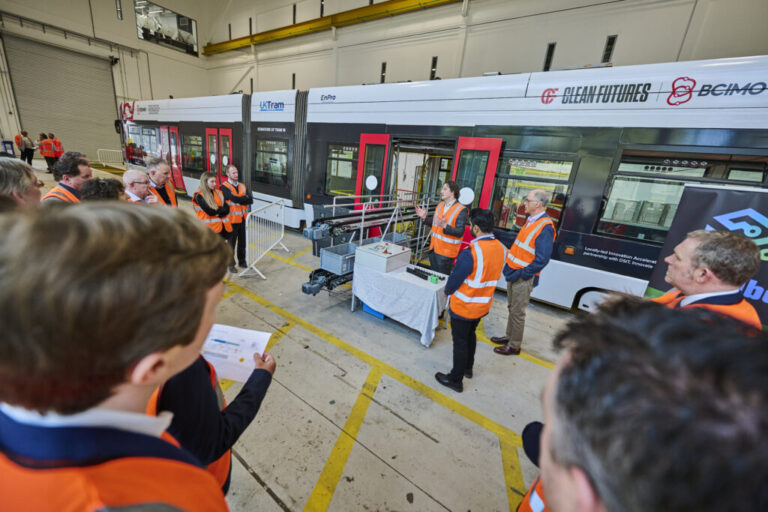 The West Midlands is home to creators, makers and innovators. From the birthplace of the industrial revolution through to the UK’s first multi-city testbed for 5G technology – the West Midlands has remained at the forefront of change for centuries. West Midlands Growth Company has compiled a collection of 50 facts to showcase the region’s contribution to the world.
The West Midlands is home to creators, makers and innovators. From the birthplace of the industrial revolution through to the UK’s first multi-city testbed for 5G technology – the West Midlands has remained at the forefront of change for centuries. West Midlands Growth Company has compiled a collection of 50 facts to showcase the region’s contribution to the world.
Everyday at Innovation Alliance for the West Midlands we want to celebrate the fantastic innovative achievements of the West Midlands – achievements of the past, present, and the future. Our Working Groups in health, low carbon, and smart cities aim to catalyse and celebrate this innovation by encouraging communication and collaboration to stimulate economic growth.
Here’s a selection of the fantastic achievements featured in #50WaysWM, but you can find the full list here:
Low Carbon
- Green heart: No city is better placed than Birmingham to lead the revolution in green energy. The University of Birmingham is world- renowned as a specialist in energy storage, with Birmingham City University hosting a dedicated Centre for Low Carbon Research. The region’s low carbon sector is the most productive in the UK, outstripping the national average for GVA per employee.
- Electric Dreams: Coventry is leading the charge in zero- emission machines. Microcab, a spin-out company from Coventry University, develops and manufactures hydrogen fuel cells for use in electric vehicles. The West Midlands continues to show its commitment to the low carbon economy.
Health
- X-ray vision: By pioneering the use of X-ray imaging, Birmingham’s John Hall-Edwards kickstarted a whole new field of medical science. He was also the first medical professional to use radiation during a surgical operation and took the first ever X- ray image of a human spine. Today, Queen Elizabeth Hospital Birmingham was the first hospital outside London to use the radiotherapy machine CyberKnife, which uses robots to target radiation on hard-to-reach tumours. It delivers a beam with 0.1mm precision
- World’s first Ibuprofen patch: University of Warwick and Coventry-based company Medherant has produced and patented the world’s first ibuprofen patch, delivering the drug directly through skin to exactly where it is needed at a consistent dose rate. This paves the way for the development of a range of long-acting, over-the-counter pain relief products, without the need to take potentially damaging doses of the drug orally
- Revolutionary brain cancer treatment: The world’s leading brain cancer drug temozolomide was created by Professor Malcolm Stevens and his team at Aston University in 1987. In combination with radiotherapy, temozolomide has become the international standard-of-care for thousands of people with this type of cancer.
- Devoted Dora: Dorothy Wyndlow Pattison – better known as Sister Dora – was famed for her nursing and medical skills at her Walsall cottage hospital in the 1860s. Her unrelenting devotion to the welfare of her patients, mirrored by staff across NHS wards today, ensured the death rate among victims in the industrial Black Country remained lower than at London’s teaching hospitals
- World authority on epilepsy: Professor Graham Harding of Aston University was the first person to find a link between flashes of light on television programmes or video games and epilepsy during the 1990s. Dr Harding published more than 150 research papers on photosensitive epilepsy. In 1993, he helped the British regulatory agency for television to draft guidelines on how to prevent triggering seizures in epilepsy sufferers.
- Ground-breaking treatment for heart conditions: Dr Helen Maddock of Coventry University has developed a new way to test the effect of drugs on the heart without using human or animal trials. The expert in cardiovascular physiology and pharmacology formed the spin-out company InoCardia Ltd to implement the ground-breaking method. Dr Maddock’s technique, which uses real human heart tissue for all tests, has the potential to shave years off the development of successful drugs for a range of treatments.
- Pioneering pacemaker research: The pacemaker has transformed the lives of patients with heart rate conditions around the world. The technology as we know it today is the result of landmark research by heart surgeon Leon Abrams and electronic engineer Ray Lightwood, both alumni of the University of Birmingham. Today, the university is leading the way in life sciences with its research into liver transplantation and revolutionary tools in the fight against infection.
Smart City
- Region makes ITs mark: Birmingham-born mathematician and computer scientist Conway Berners-Lee was part of the team which, in 1951,unveiled the Ferranti Mark 1, the world’s first ever commercially-available electronic computer. The world’s oldest original digital computer is the WITCH (Wolverhampton Instrument for Teaching Computing from Harwell), which was used at the University of Wolverhampton in the 1950s. Today, the West Midlands continues its innovation at the forefront of technology through the region’s new 5G testbed plans.
- Green light: Wolverhampton was the first place in the UK to pioneer automated traffic lights in 1927. In easing congestion at the junction of Lichfield Street and Princess Street in Princes Square, Wulfrunians brought us one of the most recognised – and widely used – global traffic systems.
- The next level of gaming: Warwickshire’s globally significant video game development cluster – known as Silicon Spa – has more than 10% of the total UK games development workforce. It’s home to over 130 of the country’s best gaming companies, including Playground Games, creators of the acclaimed Forza series. As well as the hours of fun created in households across the globe, Silicon Spa creates 3,000 to 3,500 full-time employees and generates an estimated £224 million in GVA each year.





